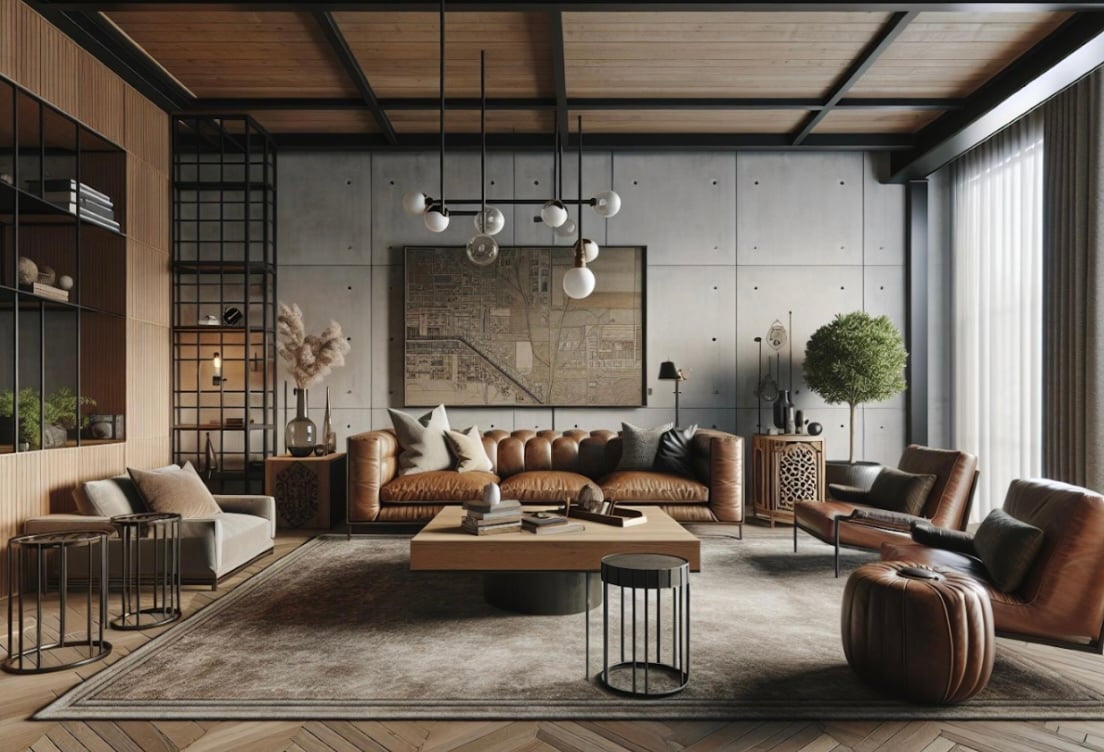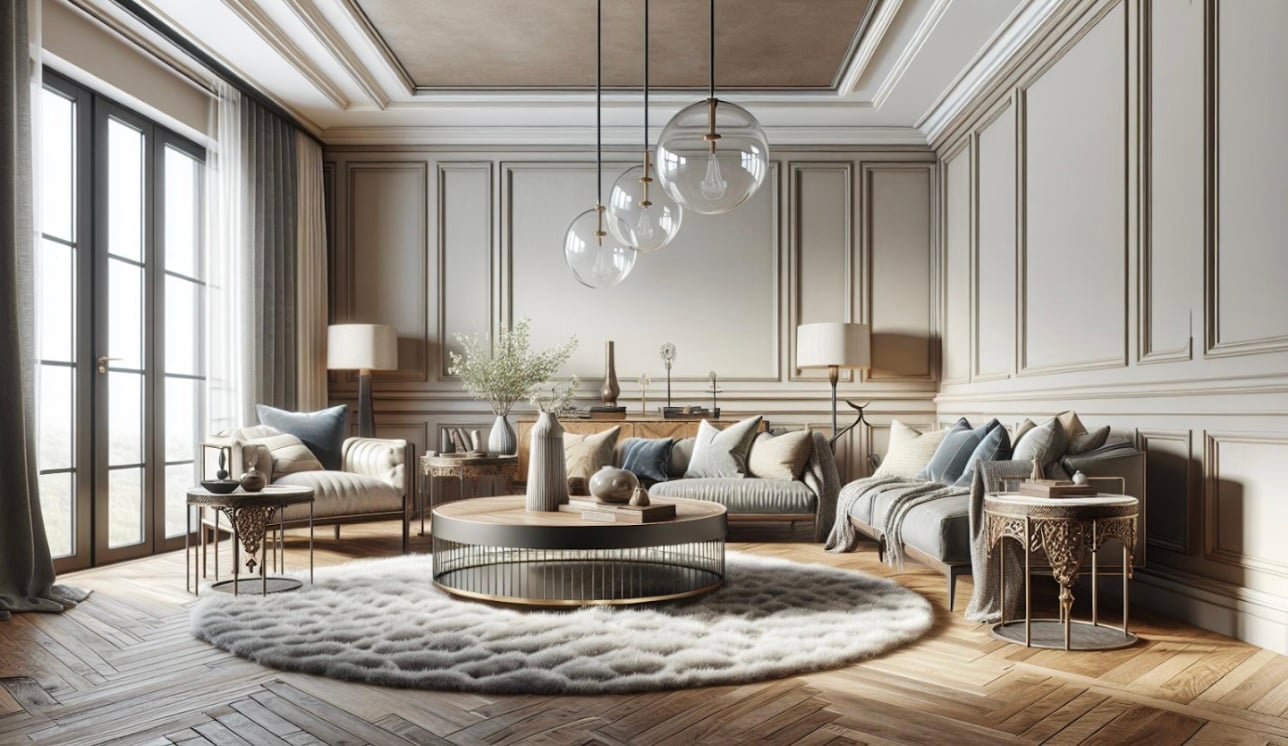
Keeping the balance between style and functionality for home tables can seem daunting. However, there’s no secret recipe, but a method to the madness of mixing and matching. In the world of interior design, achieving this perfect blend doesn’t involve a singular formula. Instead, creativity, understanding of different furniture styles, and some basic design rules brew the perfect solution.
A home that bolsters practicality and aesthetics is inevitably a true reflection of one’s taste. Using a smart pairing of contemporary and vintage furniture, you can create an inviting living space. For instance, pairing a modern coffee table with an antique side table brings a unique edge to the decor.
With these tips for mixing, you can create a unique interior space that merges convenience with design style. Adopt the art of blending styles where minimalist design with clean lines complements ornate and elaborate textures. It’s all about expressing your style with confidence.
We will be exploring various strategies to infuse style and functionality into your living space. Let your design style run free, but remember the importance of a well-curated color palette and the role it plays in tying your mixed furniture styles together.
The Role of Home Tables in Interior Design

Home tables aren’t just functional pieces, they’re central characters in the narrative of interior design. In this section, we’ll detail their role and give you guidance on making the best choices for your space.
Balancing Aesthetics and Functionality
A table isn’t just for resting your coffee mug or displaying your favorite books. It serves as a focal point, embodying both style and purpose. In interior design, mixing different styles can feel like a dance between beauty and function. Consider a sleek modern coffee table, with its clean lines and minimalist design, paired with ornate antique side tables. The resulting blend of aesthetics and functionality brings character and comfort to your space.
Choosing the Right Table for Each Room
Each room in your home calls for a different style and function when it comes to tables. A solid, sturdy home dining table exudes a welcoming invitation to gather, while a textured-rug-topped coffee table invites relaxation and casual conversation in the living room. Remember, your tables should add to your decor while complementing your lifestyle and routine. Be confident in mixing styles, like pairing a modern side table with a traditional sofa, to create your unique blend of furniture styles.
Mixing and Matching Furniture Styles with Confidence

Let’s dive deeper into the captivating world of interior design, with specifics on confidently merging varying furniture styles.
The Art of Blending Traditional and Modern Elements
In making a unique interior decor statement, the key lies in the artful combination of traditional and modern elements, creating a balanced aesthetic. Old-meets-new scenarios often result in fascinating design twists, with a traditional coffee table being flanked by modern, sleek seating, for instance. We advise heeding to the rule of contrast for a harmonious blend—pairing ornate, antique pieces with modern furniture incorporating clean lines.
Tips for Mixing Textures and Materials
Introducing an array of textures and materials in your decor adds depth and can be achieved by mixing and matching different styles. Experimentation holds the key here; try a leather sofa with a wooden coffee table or a velvet armchair against an industrial, metal side table. Remember to stick to your color palette throughout, which will help tie these diverse styles together. Thus, diversity in texture and material type, when paired thoughtfully, can indeed enhance your living space.
Incorporating Color Palettes in Table Design
Mingling a range of hues into your table designs is crucial to establishing an aesthetic that suits your interior design. Properly blending colors contribute significantly to the visual footprint of a room.
Using Neutral Colors for Versatility
Neutral shades serve as the backbone of a well-balanced room setting. These hues offer compatibility with most furniture styles we come across. Neutral tables deflect attention, letting distinctive pieces in the room stand out. Opt for hues like ivory, cream, or tan when mixing different styles of furniture. The neutral tones enhance the room’s visual coherence, simultaneously achieving verve and elegance in your living space.
Adding a Pop of Color with Accent Tables
Accent tables inject a dash of vibrancy into your living space; they’re an interior design essential. Employ these accent tables as a platform to display a bold color in the midst of your neutral decor. It’s advisable not to overdo the use of bright colors. Instead, aim for an accent table in a hue that complements the color palette of the room. For instance, a turquoise accent table pairs fantastically with a decor grounded in browns and creams, offering a necessary contrast and creating a lively focal point.
The Importance of Clean Lines in Modern Table Design
Clean lines in modern table design are pivotal in achieving a minimalist and contemporary look. They contribute significantly to creating a visually appealing focal point.
Minimalist Design for a Contemporary Look
Choosing a table with a minimalist design can immediately add a contemporary touch to your living space. Modern furniture, specifically tables incorporating clean lines, bring an organized and uncluttered look. The straightforward design approach ensures the objects in the room do not compete for attention. Various textures, such as a leather sofa or velvet armchair, could be paired harmoniously with these tables, given the consistent color palette. For instance, a wooden coffee table with distinct clean lines and a neutral color can effortlessly blend with different styles in your interior.
Creating a Focal Point with Modern Tables
Modern tables with clean lines also serve as effective focal points in interior design. They command attention without overpowering the overall decor. Particularly in a design style that incorporates a mix of traditional and modern pieces, a table with a sleek design can stand out, adding a stroke of sophistication. An example would be pairing a modern table with an antique rug, thus establishing a captivating contrast and decor continuity. As recommended, use bold colors sparingly; a modern table in neutral colors can allow other vibrant or distinctive pieces to stand out.
Conclusion
We’ve journeyed through the world of home tables, exploring how to blend style and functionality seamlessly. We’ve seen that a mix of contemporary and vintage pieces can create a unique, personal aesthetic. By understanding different furniture styles, we can confidently express our personal style.
Our exploration revealed that a well-curated color palette is crucial in unifying mixed furniture styles. We’ve learned that merging traditional and modern elements can achieve a balanced aesthetic. By pairing ornate antiques with modern pieces, we create a harmonious blend. Experimenting with textures and materials can further enhance the living space.
We also discovered the power of clean lines in modern table design. Minimalist tables can add a contemporary touch, creating an organized, uncluttered look. They can serve as effective focal points, standing out without overpowering the decor.
So, let’s embrace the adventure of combining style and functionality in our home tables. The possibilities are endless and the results, truly rewarding.
Frequently Asked Questions
1. How to effectively blend contemporary and vintage furniture styles?
Balancing contemporary and vintage pieces can be achieved by maintaining a consistent color palette, infusing diverse textures, and adding modern pieces with clean lines to create a unique, classic, yet modern aesthetic.
2. Can various furniture styles be mixed confidently?
Indeed, mixing varying furniture styles, for instance, ornate antique pieces with modern tables showcasing clean lines, can yield a harmonious blend. It’s key to echo a common color, texture, or motif throughout for continuity.
3. How to ensure a cohesive look with mismatched furniture styles?
To maintain a cohesive look amid diverse furniture styles, one powerful technique is repeating elements. Opt to reiterate a specific color, texture, pattern, or finish throughout the space to lend a curated, intentional aesthetic.
4. How to bring a modern touch to a room with traditional furniture?
To modernize a room dominated by traditional furniture, introduce pieces with sleek, minimalist designs, opt for textured fabrics, minimize clutter or display items, apply contrasting colors, and rethink your flooring and lighting options.
5. Any guideline to harmonize old and new furniture pieces?
A popular rule of thumb suggests an 80:20 ratio of modern to vintage items, yet, there’s no hard and fast rule. Personalize your interiors according to your taste, using this guideline to maintain a balanced aesthetic.
6. Is non-matching furniture acceptable in a living room?
Absolutely! Living room furniture doesn’t have to be matching. Through a strategic blend of diverse styles, textures, and colors, you can fashion a unique and stylish living room that seemingly coordinates, even with mismatched pieces.
